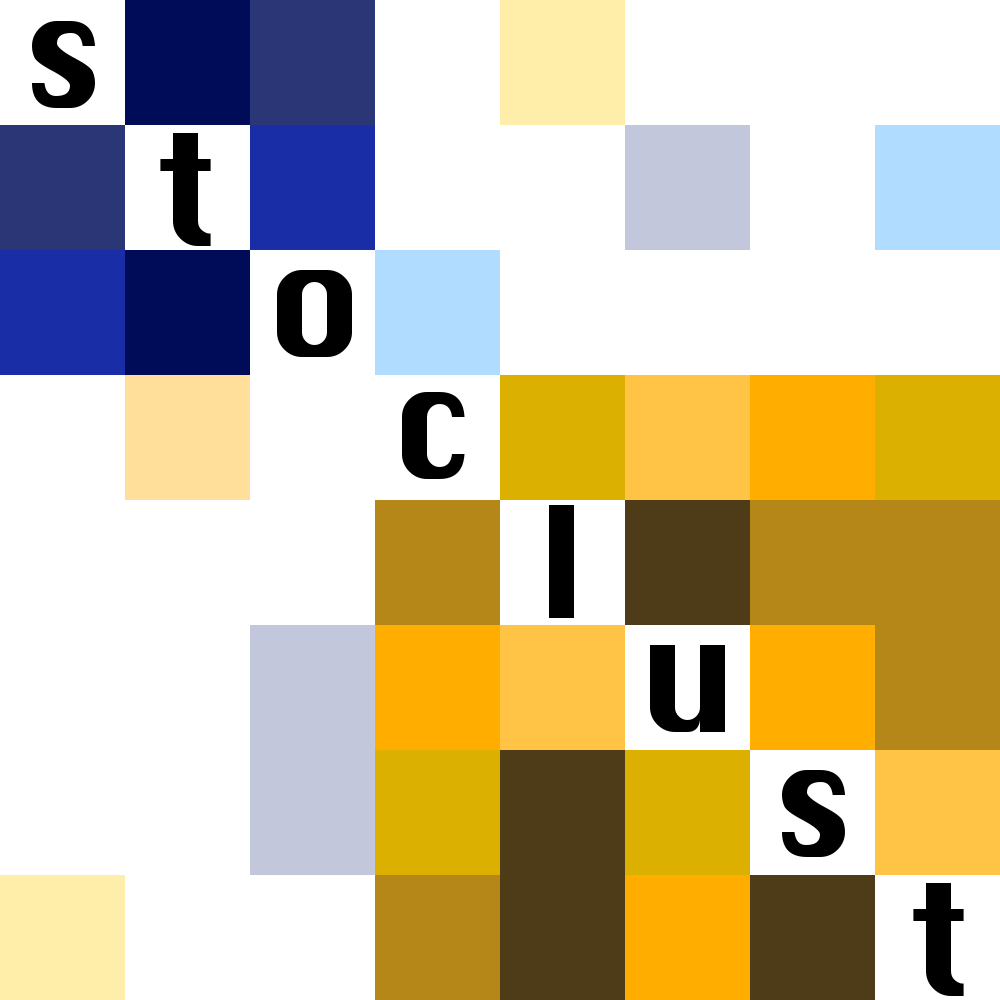stoclust

Clustering algorithms using stochastic analysis and ensemble techniques.
Aggregation
↳ stoclustAggregation(item_group,cluster_group,agg_dict)
A class for describing partitions of Indices into clusters.
Aggregations are defined by three primary attributes: their Index of items, their Index of cluster labels, and a dictionary whose keys are cluster indices and whose values are arrays of item indices, indicating which cluster contains which items.
Attributes that can be obtained are self.items and self.clusters. Aggregations act like dictionaries in that the cluster labels may be called as indices. That is, for an aggregation A, and cluster c, A[c] results in an Index containing the items in cluster c. When treated as an iterator, A returns tuples of the form (c,A[c]), much like the dictionary items() iterator. The length of an Aggregation, len(A), is the number of clusters.
Attributes
| Attribute | Visibility | Description |
|---|---|---|
items |
Public | An Index whose elements are divided into categories by the Aggregation. |
clusters |
Public | An Index whose elements are labels corresponding to the main clusters. |
_aggregations |
Private | A dict whose keys are cluster indices and whose values are arrays containing the indices of items. It is better for the user to retrieve the clustering information either through treating the Aggregation like a dictionary, or through the public method as_dict, which will also return a dict but with cluster labels as keys and Indexes of items as values. |
Methods
-
as_dict
Aggregation.as_dict()Returns a dictionary whose keys are cluster labels and whose values are
Indexes corresponding to said clusters. -
block_mat
Aggregation.block_mat()Returns a block-diagonal matrix whose indices correspond to items and which contains a block for every cluster.
-
by_cluster
Aggregation.by_cluster()Returns an array
B, whose indices correspond to items, such thatB[i]is the index of the cluster containingself.items[i].